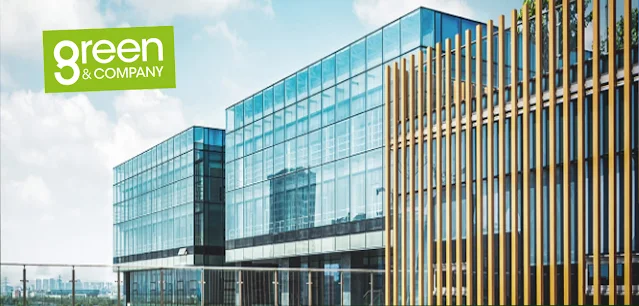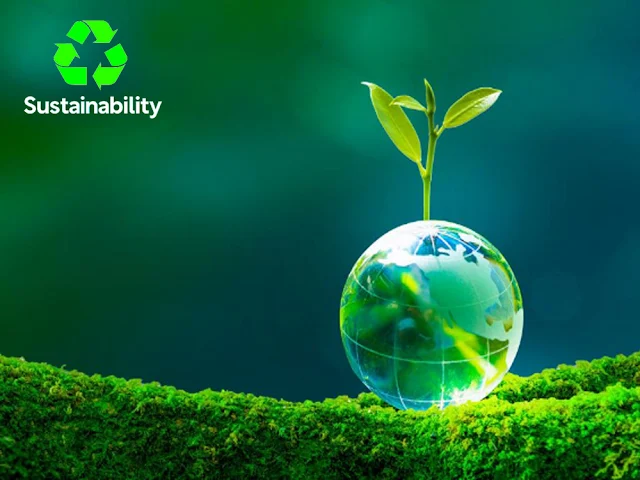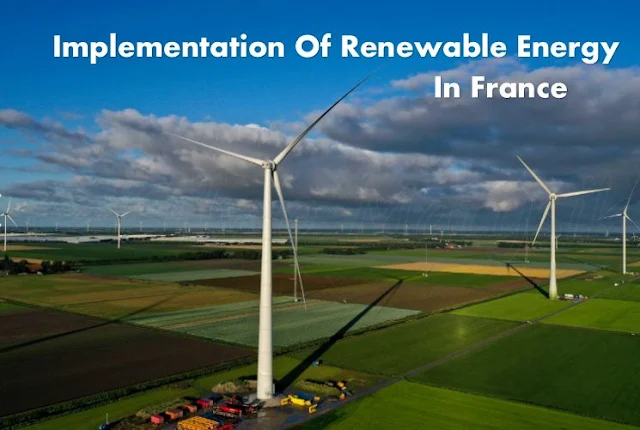
French vision towards renewable energy
The French State has a clear vision towards renewable energy, which is aimed at reducing the country's dependence on fossil fuels and promoting a transition to a low-carbon economy. The State's vision towards renewable energy is centered around three key pillars: energy security, environmental sustainability, and economic development.
Energy Security:
The French State recognizes the importance of energy security and aims to ensure that the country has a diversified and secure energy supply. The development of renewable energy is seen as a way to reduce the country's dependence on imported fossil fuels, thereby increasing energy security.
Environmental Sustainability:
The French State is committed to reducing greenhouse gas emissions and mitigating the impacts of climate change. Renewable energy is seen as a key tool to achieve this goal, as it produces electricity with lower carbon emissions compared to fossil fuels. In addition, renewable energy can help reduce other environmental impacts associated with fossil fuel extraction and combustion, such as air and water pollution.
Economic Development:
The French State recognizes the economic potential of renewable energy and aims to support the development of a domestic renewable energy industry. The growth of renewable energy is seen as a way to create new jobs and promote economic development in regions where renewable energy resources are abundant.
To achieve its vision towards renewable energy, the French State has set ambitious targets for the deployment of renewable energy. These include a target of 33% renewable energy in the overall energy mix by 2030, and a target of 40% renewable energy in the electricity mix by 2030. The State has also put in place various policy measures to support the development of renewable energy, including feed-in tariffs, tax incentives, and regulatory support.
The French State's vision towards renewable energy is focused on promoting a sustainable, secure, and prosperous energy future for the country. The State's commitment to renewable energy is expected to continue, with a continued emphasis on policy measures and investment to support the growth of the renewable energy sector.
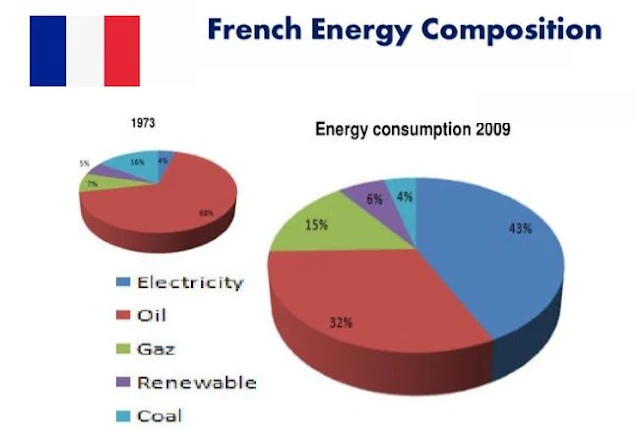
The composition of energy consumption in France
The composition of energy consumption in France is diverse, with the country relying on a mix of different energy sources to meet its energy needs.
Here is a breakdown of the main sources of energy consumption in France:
Nuclear power: Nuclear power is the largest source of electricity generation in France, accounting for around 70% of the country's electricity production. France has 56 nuclear reactors, which are operated by state-owned utility company EDF.
Fossil fuels: Despite the country's reliance on nuclear power, fossil fuels still account for a significant share of energy consumption in France. Natural gas is the most commonly used fossil fuel, accounting for around 20% of primary energy consumption, while oil accounts for around 31%.
Renewables: France has been increasing its use of renewable energy sources in recent years, with a focus on wind and solar power. In 2020, renewables accounted for around 19% of the country's electricity production, with wind and solar power contributing around 8% and 3% respectively.
Hydroelectric power: Hydroelectric power is another significant source of renewable energy in France, accounting for around 10% of electricity production. The country has a number of hydroelectric dams and power plants, particularly in mountainous regions.
Bioenergy: Bioenergy, including biomass and biogas, also contributes to France's energy mix, accounting for around 4% of primary energy consumption.
France's energy mix is dominated by nuclear power, but the country is taking steps to diversify its energy sources and increase its use of renewables. The French government has set a target of achieving 40% renewable energy in its energy mix by 2030, which will require significant investment and policy support.
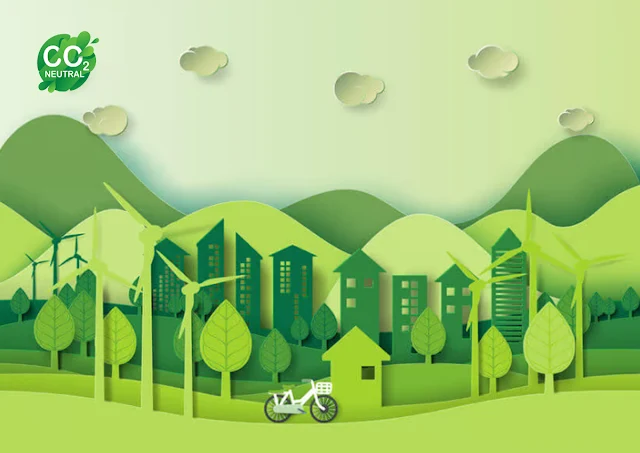
France's Net Zero Carbon Target
France has set a target of achieving net-zero carbon emissions by 2050. This means that the country aims to balance the amount of carbon dioxide and other greenhouse gases it emits with the amount it removes from the atmosphere, effectively achieving a state of carbon neutrality.
To achieve this goal, France has set out a range of policies and initiatives aimed at reducing its greenhouse gas emissions across various sectors, including energy, transport, agriculture, and buildings.
Some of the key measures that the country has taken to date include:
Promoting renewable energy: France has set a target of achieving 40% renewable energy in its energy mix by 2030, with a focus on increasing the share of wind and solar power.
Investing in public transport: France is investing heavily in public transport, with plans to make it more affordable and accessible in cities and rural areas. The country is also encouraging the use of electric and hybrid vehicles.
Improving energy efficiency: France has implemented various measures to improve the energy efficiency of buildings, including stricter building codes and financial incentives for energy-efficient renovations.
Supporting sustainable agriculture: France is promoting sustainable agriculture practices, such as reducing the use of pesticides and fertilizers, and encouraging the adoption of organic farming.
Phasing out fossil fuels: France has committed to phasing out the use of coal for electricity generation by 2022, and has also announced plans to ban the sale of petrol and diesel cars by 2040.
France's net-zero carbon target reflects its commitment to addressing the global climate crisis and transitioning to a low-carbon economy. While achieving this goal will require significant efforts and investments, France is taking ambitious steps to reduce its greenhouse gas emissions and promote sustainable development.
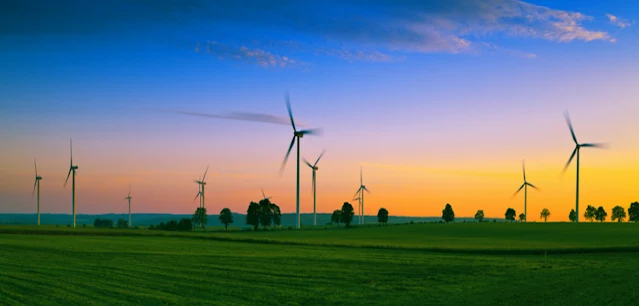
French Regulation for Renewable Energy
France has implemented a number of regulations to support the development of renewable energy sources and promote a transition to a more sustainable energy system.
Here are some examples French Regulation for Renewable Energy
Feed-in tariffs: France has implemented feed-in tariffs, which provide financial incentives to individuals and businesses that generate renewable energy. These tariffs guarantee a fixed price for the electricity generated, which helps to encourage the development of renewable energy projects.
Renewable energy targets: France has set a target of generating 32% of its energy from renewable sources by 2030. This target includes a specific goal of developing 8.3 GW of offshore wind capacity by 2028.
Simplified administrative procedures: France has streamlined the administrative procedures for renewable energy projects to make it easier for developers to obtain permits and get projects off the ground.
Net metering: France has implemented net metering, which allows individuals and businesses to sell excess electricity generated from their renewable energy systems back to the grid.
Green certificates: France has implemented a green certificates scheme, which provides certificates to companies that generate renewable energy. These certificates can be traded on the market, providing an additional source of revenue for renewable energy projects.
These regulations are designed to promote the development of renewable energy in France and help the country transition to a more sustainable energy system. While there is still work to be done to achieve France's renewable energy targets, these regulations are an important step towards a more environmentally friendly and economically sustainable future.
Implementation of Renewable Energy in France
France has been making significant efforts to increase the share of renewable energy in its overall energy mix in recent years. The country has set ambitious targets for renewable energy deployment, and various policy measures have been put in place to support the transition to clean energy.
Here are some key aspects of France's implementation of renewable energy:
Renewable Energy Targets: France has set an ambitious target of generating 33% of its energy from renewable sources by 2030. This target was revised upwards in 2018 from the previous target of 23% by 2020.
Wind Energy:
France has a significant potential for wind energy and has been rapidly expanding its wind power capacity. The country's wind power capacity has grown from 7.5 GW in 2010 to over 17 GW in 2021, making it the fourth-largest wind power producer in Europe.
Solar Energy:
France has also been increasing its solar energy capacity in recent years, with a target of 20 GW of installed solar capacity by 2023. As of 2021, France had over 10 GW of solar capacity.
Hydro Energy:
France is the second-largest producer of hydropower in Europe, with around 25 GW of installed capacity. Hydropower accounts for around 10% of France's electricity generation.
Biomass Energy:
France has also been promoting the use of biomass energy, which involves using organic matter to produce heat and electricity. The country has set a target of 8.5 million tonnes of biomass energy by 2020, which would account for around 7% of France's energy consumption.
Policy Measures:
France has put in place various policy measures to support the development of renewable energy, including feed-in tariffs, tax credits, and regulatory support. In addition, the country has introduced energy efficiency measures to reduce overall energy consumption.
Challenges:
Despite its ambitious targets and policy measures, France faces challenges in implementing renewable energy, including grid constraints, public opposition to some forms of renewable energy, and the need to balance the cost of renewable energy with maintaining energy security.
France has made significant progress in implementing renewable energy, particularly in wind and solar power. The country's ambitious targets and policy measures suggest that France will continue to increase its use of renewable energy in the coming years.
Implementation of Renewable Energy in the French State Government
The French State government has been actively involved in the implementation of renewable energy policies and initiatives to promote the transition towards a low-carbon economy.
Here are some key aspects of the French State government's implementation of renewable energy:
Policy Framework:
The French State government has put in place a comprehensive policy framework to support the deployment of renewable energy. This framework includes national and regional energy plans, regulations, and financial incentives, such as feed-in tariffs, tax credits, and subsidies.
Investment in Renewable Energy:
The French State government has been investing heavily in renewable energy, particularly in wind and solar power. In 2019, the government announced a plan to invest 100 billion euros in energy transition, with a significant portion earmarked for renewable energy.
Research and Development:
The French State government has been investing in research and development in renewable energy technologies. For example, the government launched a research program in 2015 called "Investissements d'Avenir" (Investments for the Future), which aimed to support the development of innovative renewable energy technologies.
Support for Local Communities:
The French State government has also been supporting local communities in the development of renewable energy projects. The government has provided funding for local renewable energy initiatives and has encouraged the establishment of renewable energy cooperatives.
Public Awareness and Engagement:
The French State government has been actively engaging with the public to raise awareness about the benefits of renewable energy and to encourage public support for renewable energy initiatives. The government has launched campaigns to promote renewable energy and has held public consultations on energy policies.
The French State government has been taking a proactive approach to the implementation of renewable energy policies and initiatives. The government's investment in renewable energy, research and development, and support for local communities, coupled with public awareness and engagement, is expected to drive the growth of the renewable energy sector in France.
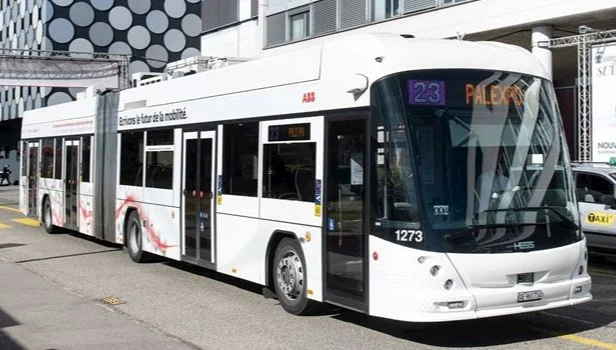
Implementation of Renewable Energy in the French Transport Sector
The French transport sector has been making significant efforts to implement renewable energy solutions in order to reduce emissions and promote sustainable practices.
Here are some examples of the implementation of renewable energy in the French transport sector:
Electric and Hybrid Vehicles:
France has been promoting the use of electric and hybrid vehicles, with the government offering incentives for the purchase of such vehicles, and implementing a ban on the sale of new petrol and diesel vehicles by 2040. Additionally, France has implemented a network of electric vehicle charging stations across the country.
Public Transportation:
Many French cities have implemented sustainable transportation solutions, including the use of electric and hybrid buses, as well as trams and light rail systems that run on renewable energy sources.
Biofuels:
France has been promoting the use of biofuels in the transport sector, including biodiesel and bioethanol, which can be produced from agricultural crops and waste products. This helps to reduce emissions from traditional fossil fuels.
Railway Transportation:
France has an extensive network of railways, and the country has been investing in high-speed trains and electric trains, which run on renewable energy sources such as wind and hydro power.
Government Policies:
The French government has implemented several policies to promote the use of renewable energy in the transport sector, including incentives for the purchase of electric and hybrid vehicles, subsidies for the development of sustainable transportation infrastructure, and taxes on high-emission vehicles.
The French transport sector is making significant efforts to implement renewable energy solutions in order to reduce emissions and promote sustainable practices. The implementation of renewable energy in the transport sector not only helps to reduce emissions, but also serves as an example for other countries and industries to adopt sustainable practices.

Implementation of renewable energy in the French tourism sector
The French tourism sector has been actively working to incorporate renewable energy in its operations, particularly in the areas of transportation, accommodation, and attractions.
Here are some examples of the implementation of renewable energy in the French tourism sector:
Renewable Energy in Transportation:
France has been investing in electric and hybrid vehicles, with several cities and regions implementing electric vehicle charging stations. Additionally, several tourism companies have introduced electric or hybrid vehicles in their fleets, including taxi services, car rental companies, and tourist buses.
Renewable Energy in Accommodation
Many hotels and resorts in France are implementing renewable energy solutions to reduce their carbon footprint. This includes the use of solar panels for heating water and generating electricity, as well as the installation of energy-efficient lighting and appliances.
Renewable Energy in Attractions
Several tourist attractions in France are implementing renewable energy solutions to reduce their energy consumption and carbon footprint. This includes the use of solar panels to power lighting and other electrical systems, as well as the installation of energy-efficient heating and cooling systems.
Government Policies
The French government has implemented several policies to promote the use of renewable energy in the tourism sector, including incentives for businesses to invest in renewable energy solutions and subsidies for the development of green tourism projects.
The French tourism sector is making significant efforts to incorporate renewable energy solutions into its operations, in order to reduce its carbon footprint and promote sustainable tourism practices. The implementation of renewable energy in the tourism sector not only helps to reduce emissions, but also serves as an example for tourists to adopt sustainable practices in their own lives.
Implementation of the French State renewable energy program in agriculture
The French government has implemented several initiatives to promote the use of renewable energy in the agricultural sector.
Here are some examples:
Solar panels on farms: The French government has encouraged farmers to install solar panels on their land and buildings to generate electricity for their own use or to sell back to the grid. In 2020, there were over 60,000 solar installations on agricultural land in France.
Biogas production: Biogas is a renewable energy source that is produced by the anaerobic digestion of organic materials such as animal manure, crop residues, and food waste. The French government has supported the development of biogas production facilities on farms, which can generate electricity and heat, and also provide a source of fertilizer.
Wind turbines: The French government has also encouraged the installation of wind turbines on farms, particularly in regions with high wind potential. Farmers can lease their land to wind power developers, and also benefit from the sale of electricity generated by the turbines.
Energy efficiency: The French government has provided financial incentives and technical assistance to farmers to improve the energy efficiency of their operations. This includes measures such as insulation, the use of more efficient lighting and equipment, and the adoption of precision agriculture techniques.
Biomass heating: The French government has supported the use of biomass heating systems on farms, which can burn crop residues and other organic materials to provide heat for buildings and greenhouses.
These initiatives have helped to increase the use of renewable energy in the agricultural sector in France, while also promoting energy efficiency and reducing greenhouse gas emissions. The French government aims to continue supporting the development of renewable energy in agriculture through its broader renewable energy program.
Implementation of the French State's renewable energy policy in the industrial field
The French government has implemented several measures to encourage the use of renewable energy in the industrial sector, with the aim of reducing greenhouse gas emissions and promoting a transition towards a low-carbon economy.
Here are some examples Implementation of the French State's renewable energy policy in the industrial field
Renewable energy incentives: The French government offers financial incentives, such as tax credits and subsidies, to businesses that invest in renewable energy projects, such as solar panels, wind turbines, and biomass boilers. These incentives help to offset the upfront costs of renewable energy installations and encourage businesses to transition away from fossil fuels.
Energy efficiency: The French government has implemented energy efficiency regulations and standards for industrial buildings and equipment, with the aim of reducing energy consumption and greenhouse gas emissions. These regulations apply to new buildings and equipment, as well as to renovations and upgrades of existing buildings and equipment.
Renewable energy procurement: The French government has set targets for public procurement of renewable energy, including for the industrial sector. This encourages businesses to invest in renewable energy projects, as they may have a guaranteed buyer for their energy production.
Energy management systems: The French government promotes the use of energy management systems, which enable businesses to monitor and control their energy consumption, identify areas for improvement, and optimize their use of renewable energy sources.
Research and development: The French government invests in research and development to support the development of new renewable energy technologies, such as advanced solar panels, wind turbines, and energy storage systems, which can be used by the industrial sector.
These measures help to support the transition towards a low-carbon economy in the industrial sector in France, while also promoting energy efficiency and reducing greenhouse gas emissions. The French government aims to continue supporting the development of renewable energy in the industrial sector through its broader renewable energy policy.

French People's View on Renewable Energy
The French people have generally shown strong support for renewable energy, with surveys indicating that a majority of the population is in favor of the transition to a low-carbon economy.
Here are some key aspects of the French people's view on renewable energy:
Many French people are concerned about the environmental impact of fossil fuels and the need to mitigate climate change. Renewable energy is seen as a key solution to these challenges, and many French people believe that a transition to renewable energy is necessary to ensure a sustainable future.
Energy Security:
French people are also concerned about energy security, and the high level of dependence on imported fossil fuels. Renewable energy is seen as a way to reduce the country's reliance on foreign energy sources and increase energy security.
Economic Opportunities:
Many French people view renewable energy as an economic opportunity, with the potential to create new jobs and stimulate economic growth. Renewable energy is seen as a way to support local communities and promote economic development in regions with abundant renewable energy resources.
Challenges and Concerns:
While support for renewable energy is generally high, some French people have expressed concerns about the cost and feasibility of renewable energy. Others are concerned about the visual impact of renewable energy installations, such as wind turbines and solar panels, on the landscape.
The French people's view on renewable energy is generally positive, with support driven by environmental concerns, energy security, and economic opportunities. While there are some concerns and challenges to the implementation of renewable energy, the public support for the transition to a low-carbon economy is expected to continue.
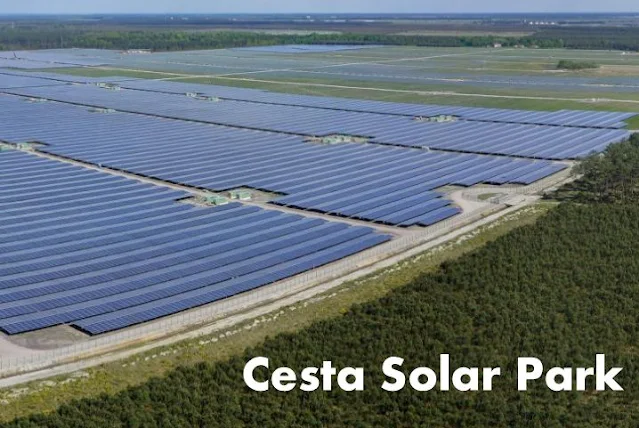
Solar Power Plants Project in France
France has been investing in solar power plants as a way to promote the development of renewable energy sources.
Here are some key aspects of solar power plants in France:
Installed Capacity
France has installed solar capacity of over 10 GW, with most of the installations being small-scale rooftop solar systems. France's largest solar power plant is the Cestas Solar Park in Bordeaux, with an installed capacity of 300 MW.
Locations
Solar power plants in France are located in various regions, including the south-eastern and south-western parts of the country, where there is high solar irradiance.
Types of Solar Power Plants
There are several types of solar power plants in France, including ground-mounted solar plants, floating solar plants, and rooftop solar installations.
Government Policies
The French government has implemented several policies to support the development of solar power plants, including feed-in tariffs, tax credits, and subsidies. The government has also set a target of 20 GW of installed solar capacity by 2023.
Challenges
While solar power plants have the potential to play a significant role in France's renewable energy mix, there are some challenges to their development. These include grid integration issues, land-use conflicts, and regulatory barriers.
Solar power plants are an important component of France's renewable energy strategy, with the government implementing policies to support their development. While there are challenges to their implementation, solar power plants are expected to continue to play a significant role in France's transition towards a low-carbon economy.
Solar power plant projects in France:
Cestas Solar Park: The Cestas Solar Park is located near Bordeaux in southwestern France. It has a capacity of 300 MW, making it one of the largest solar power plants in Europe.
Néovia Solar Park: The Néovia Solar Park is located in the Nouvelle-Aquitaine region in southwestern France. It has a capacity of 43 MW and consists of more than 150,000 solar panels.
Toul-Rosières Solar Park: The Toul-Rosières Solar Park is located in the Grand Est region in northeastern France. It has a capacity of 115 MW and consists of over 1 million solar panels.
Rivesaltes Solar Park: The Rivesaltes Solar Park is located in the Occitanie region in southern France. It has a capacity of 60 MW and consists of over 300,000 solar panels.
Solar power plants in France provide a significant source of clean and renewable energy, and the country is continuing to invest in this technology to reduce its carbon footprint and achieve its renewable energy targets.
Here are 20 names, locations, and capacities of solar power projects in France:
Cestas Solar Park - Cestas, Gironde - 300 MW
Rivesaltes Solar Park - Rivesaltes, Pyrénées-Orientales - 300 MW
Toul-Rosières Solar Park - Toul-Rosières, Meurthe-et-Moselle - 115 MW
Curbans Solar Park - Curbans, Alpes-de-Haute-Provence - 143 MW
La Tour d'Aigues Solar Park - La Tour d'Aigues, Vaucluse - 21 MW
Gardanne Solar Park - Gardanne, Bouches-du-Rhône - 10 MW
Gabardan Solar Park - Gabardan, Landes - 55 MW
Les Mées Solar Park - Les Mées, Alpes-de-Haute-Provence - 100 MW
Puimichel Solar Park - Puimichel, Alpes-de-Haute-Provence - 17 MW
Narbonne Solar Park - Narbonne, Aude - 8 MW
Alpes-de-Haute-Provence Solar Park - Oraison, Alpes-de-Haute-Provence - 25 MW
Languedoc-Roussillon Solar Park - Névian, Aude - 5 MW
Valence Solar Park - Valence, Drôme - 4.5 MW
Le Bourget-du-Lac Solar Park - Le Bourget-du-Lac, Savoie - 1.3 MW
Arles Solar Park - Arles, Bouches-du-Rhône - 4.1 MW
Limousin Solar Park - La Jonchère-Saint-Maurice, Haute-Vienne - 5.2 MW
Les Andelys Solar Park - Les Andelys, Eure - 4.8 MW
Le Boulou Solar Park - Le Boulou, Pyrénées-Orientales - 4.4 MW
Jura Solar Park - Lons-le-Saunier, Jura - 4.2 MW
Les Mées II Solar Park - Les Mées, Alpes-de-Haute-Provence - 20 MW
Note:
The capacity mentioned is the total capacity of each project.
Some projects may be in the same region and have different capacities.
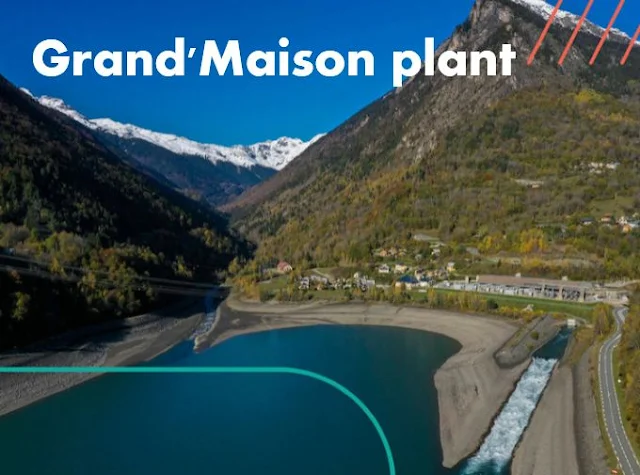
Hydro Power Plants Project in France
Hydro power plants are an important source of renewable energy in France, and the country has a long history of hydroelectric power generation.
Here are some key aspects of hydro power plants in France:
Installed Capacity
As of 2021, France has an installed hydro power capacity of over 25 GW, making it one of the largest hydro power producers in Europe. Hydro power accounts for around 10% of France's electricity generation.
Locations
Hydro power plants in France are located in various regions, including the Alps, the Pyrenees, the Massif Central, and the Vosges Mountains. Most of the hydro power plants are run-of-river plants, which generate electricity by using the natural flow of water.
Types of Hydro Power Plants
France has several types of hydro power plants, including run-of-river plants, pumped-storage plants, and reservoir plants. The largest hydro power plant in France is the Grand'Maison plant, which has an installed capacity of 1,800 MW.
Government Policies
The French government has implemented several policies to support the development of hydro power plants, including feed-in tariffs, tax credits, and subsidies. The government has also set a target of 27 GW of installed hydro power capacity by 2023.
Challenges
While hydro power plants are an important source of renewable energy, there are some challenges to their development in France. These include environmental concerns, land-use conflicts, and the aging of existing infrastructure.
Hydro power plants are a significant source of renewable energy in France, with the government implementing policies to support their development. While there are challenges to their implementation, hydro power plants are expected to continue to play an important role in France's transition towards a low-carbon economy.
Here are some examples of hydro power plant projects in France:
Grand'Maison Dam: The Grand'Maison Dam is located in the Isère department in southeastern France. It has a capacity of 1,800 MW and is the largest hydro power plant in France.
La Coche Dam: The La Coche Dam is located in the Savoie department in southeastern France. It has a capacity of 1,080 MW and is the second-largest hydro power plant in France.
Génissiat Dam: The Génissiat Dam is located on the Rhône River in eastern France. It has a capacity of 420 MW and is one of the largest hydro power plants in France.
Sainte-Croix Lake: The Sainte-Croix Lake is located in the Provence-Alpes-Côte d'Azur region in southeastern France. It is a man-made lake created by the construction of the Sainte-Croix Dam and has a capacity of 2,270,000,000 cubic meters.
Here are 20 names, locations, and capacities of hydroelectric power projects in France:
Grand'Maison - Isère - 1,800 MW
Grangent - Loire - 420 MW
Serre-Ponçon - Hautes-Alpes - 380 MW
Bort-les-Orgues - Corrèze - 280 MW
La Rance - Brittany - 240 MW
Roselend - Savoie - 185 MW
Monteynard-Avignonet - Isère - 115 MW
Villefort - Lozère - 85 MW
Vouglans - Jura - 80 MW
Sautet - Isère - 75 MW
Les Barielles - Tarn - 61 MW
EDF Lac d'Orient - Aube - 52 MW
Génissiat - Ain - 42 MW
Sainte-Croix - Alpes-de-Haute-Provence - 38 MW
Pannecière - Morvan - 34 MW
Eguzon - Indre - 30 MW
Les Fades - Puy-de-Dôme - 25 MW
Saint-Pierre - Jura - 24 MW
La Girotte - Doubs - 14 MW
La Coche - Savoie - 12 MW
Note:
The capacities mentioned are the peak capacities or the maximum power that can be generated by the hydroelectric power plants. Some projects may be located in the same area and have different capacities.
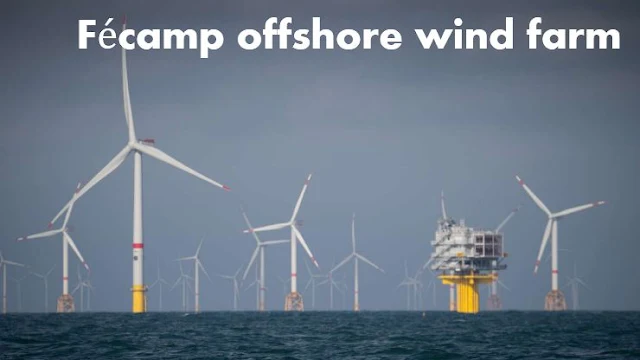
Wind Power Plants Project in France
France has been investing in wind power plants as a way to promote the development of renewable energy sources.
Here are some key aspects of wind power plants projects in France:
Installed Capacity
France has an installed wind capacity of over 17 GW, making it one of the largest wind power producers in Europe. Wind power accounts for around 8% of France's electricity generation.
Locations
Wind power plants in France are located in various regions, including the north-western and south-western parts of the country, where there is high wind potential. The regions with the highest wind potential are Brittany, Pays de la Loire, Normandy, and Aquitaine.
Types of Wind Power Plants
France has several types of wind power plants, including onshore and offshore wind farms. The largest wind farm in France is the Fécamp offshore wind farm, which has an installed capacity of 498 MW.
Government Policies
The French government has implemented several policies to support the development of wind power plants, including feed-in tariffs, tax credits, and subsidies. The government has also set a target of 34 GW of installed wind capacity by 2028.
Challenges
While wind power plants have the potential to play a significant role in France's renewable energy mix, there are some challenges to their development. These include the visual impact of wind turbines on the landscape, noise pollution, and the potential impact on wildlife.
Wind power plants are an important component of France's renewable energy strategy, with the government implementing policies to support their development. While there are challenges to their implementation, wind power plants are expected to continue to play a significant role in France's transition towards a low-carbon economy.
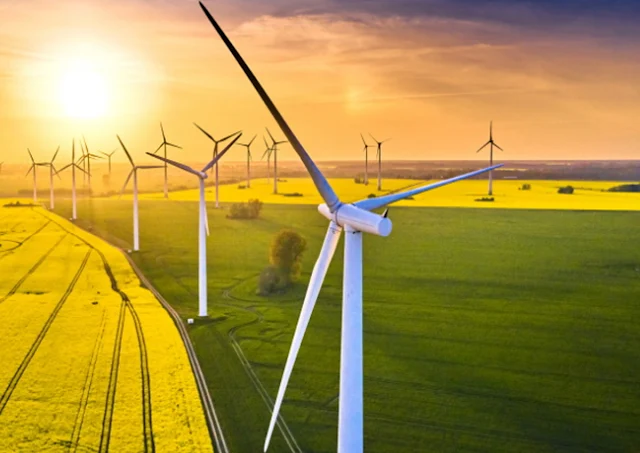
Wind power plant projects in France
There are several wind farms in France with varying capacities and owners.
Here are some examples Wind power plant projects in France
Fécamp Offshore Wind Farm: The Fécamp Offshore Wind Farm is a project currently under construction in the English Channel off the coast of Normandy. Once completed, it will have a capacity of 498 MW and will provide electricity to around 770,000 homes.
Saint-Nazaire Offshore Wind Farm: The Saint-Nazaire Offshore Wind Farm is currently under construction off the coast of Loire-Atlantique in western France. It will have a capacity of 480 MW and will provide electricity to around 20% of the Loire-Atlantique region's population.
Courseulles-sur-Mer Offshore Wind Farm: The Courseulles-sur-Mer Offshore Wind Farm is another project currently under construction in the English Channel off the coast of Normandy. It will have a capacity of 448 MW and will provide electricity to around 630,000 homes.
Les Monts Wind Farm: The Les Monts Wind Farm is located in the Champagne-Ardenne region in northeastern France. It has a capacity of 36 MW and consists of 12 wind turbines.
The Côte-d'Or wind farm, located in Burgundy, is owned by JP Energie Environnement. The wind farm has a capacity of 24 MW and consists of 12 wind turbines.
The Saint-Martin-L’Ars wind farm, located in Nouvelle-Aquitaine, is owned by Boralex. The wind farm has a capacity of 10 MW and consists of five wind turbines.
The Sommette-Eaucourt wind farm, located in Hauts-de-France, is owned by EDF Energies Nouvelles. The wind farm has a capacity of 32 MW and consists of 16 wind turbines.
The Champagne Picardie wind farm, located in Picardie, is owned by EDF Energies Nouvelles. The wind farm has a capacity of 97 MW and consists of 49 wind turbines.
The La Vallée wind farm, located in Pays de la Loire, is owned by Boralex. The wind farm has a capacity of 20 MW and consists of ten wind turbines.
The Haute Borne wind farm, located in Brittany, is owned by WPD. The wind farm has a capacity of 21 MW and consists of seven wind turbines.
The La Chapelle Montligeon wind farm, located in Normandy, is owned by EDF Energies Nouvelles. The wind farm has a capacity of 13.8 MW and consists of six wind turbines.
The Basse Thiérache wind farm, located in Hauts-de-France, is owned by RES. The wind farm has a capacity of 21 MW and consists of nine wind turbines.
These wind farms are just a few examples of the many wind energy projects in France. France has made significant investments in renewable energy in recent years, including wind power, with the goal of reducing its reliance on fossil fuels and transitioning to a low-carbon energy system.
In 2020, wind power accounted for about 7.5% of France's electricity production, according to the Global Wind Energy Council. France has set a target of generating 33% of its electricity from renewable energy sources by 2030, and wind power is expected to play a significant role in meeting this target.
In addition to the wind farms listed above, there are many other wind energy projects in various stages of development throughout France. For example, the Dunkirk offshore wind farm, which will have a capacity of 600 MW, is currently under construction and is expected to be completed in 2027. Other large-scale wind projects in development include the Dieppe-Le Tréport offshore wind farm, the Oléron offshore wind farm, and the Île d'Yeu and Noirmoutier offshore wind farm.
France is also investing in innovative wind energy technologies, such as floating offshore wind turbines, which can be installed in deeper waters and are less visually intrusive than traditional offshore wind turbines. Overall, wind power is expected to continue to play an important role in France's transition to a low-carbon energy system and in meeting its renewable energy targets.
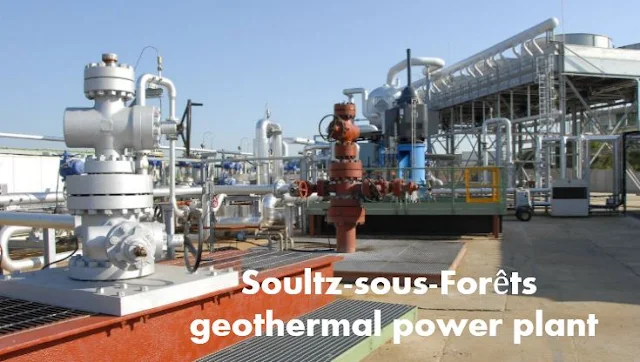
Geothermal Power Plants Project in France
France has several geothermal power plants, which generate electricity by harnessing the Earth's heat. Geothermal energy is a clean and renewable energy source, and France has been actively developing this energy source in recent years.
Here are list of Geothermal Power Plants Project in France
Soultz-sous-Forêts geothermal power plant: The Soultz-sous-Forêts geothermal power plant is located in Alsace, eastern France. It is the first geothermal power plant in France, and one of the first in Europe, to use Enhanced Geothermal System (EGS) technology. The plant generates electricity by extracting hot water from a deep geothermal reservoir, which is then used to generate steam that drives a turbine to produce electricity.
Rittershoffen geothermal power plant: The Rittershoffen geothermal power plant is located in Alsace, eastern France. It is one of the largest geothermal power plants in France, with a capacity of 2.5 MW. The plant generates electricity by extracting hot water from a geothermal reservoir located at a depth of around 3,500 meters.
Bouillante geothermal power plant: The Bouillante geothermal power plant is located on the Caribbean island of Guadeloupe, which is part of France's overseas territories. The plant generates electricity by harnessing the heat from underground hot water reservoirs. The plant has a capacity of 15 MW, making it the largest geothermal power plant in France.
Saint-Dié-des-Vosges geothermal project: The Saint-Dié-des-Vosges geothermal project is located in northeastern France. The project aims to develop a geothermal power plant that can generate electricity by extracting hot water from a deep geothermal reservoir. The project is currently in the planning and development phase.
Geothermal power plants in France provide a significant source of clean and renewable energy, and the country is continuing to invest in this technology to reduce its carbon footprint and achieve its renewable energy targets.
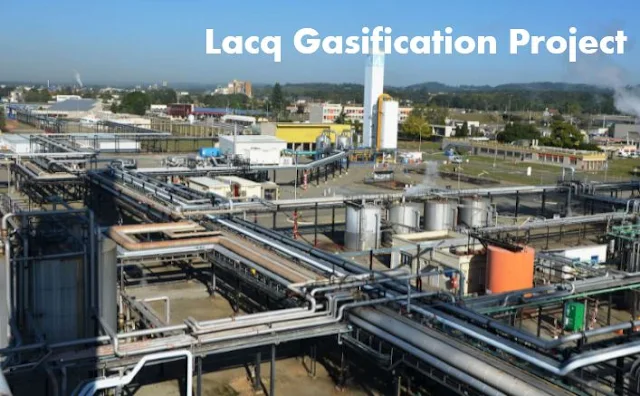
Bio Mass Power Plants Project in France
Biomass power plants are an important source of renewable energy in France, and the country has been investing in this sector to reduce greenhouse gas emissions and promote sustainable development.
Here are some key aspects of biomass power plants projects in France:
Installed Capacity: France has an installed biomass capacity of around 2 GW, making it one of the largest biomass power producers in Europe. Biomass power accounts for around 2% of France's electricity generation.
Types of Biomass Power Plants: France has several types of biomass power plants, including those that use wood, agricultural waste, and municipal solid waste as fuel. The majority of biomass power plants in France use wood as fuel.
Locations: Biomass power plants in France are located in various regions, with the largest number of plants located in the north-western and south-western parts of the country.
Government Policies: The French government has implemented several policies to support the development of biomass power plants, including feed-in tariffs, tax credits, and subsidies. The government has also set a target of 8.8 GW of installed biomass capacity by 2030.
Challenges: While biomass power plants can provide a reliable and renewable source of energy, there are some challenges to their development in France. These include concerns about the sustainability of wood sourcing, as well as emissions associated with the transportation and processing of biomass fuel.
Biomass power plants are an important component of France's renewable energy strategy, with the government implementing policies to support their development. While there are challenges to their implementation, biomass power plants are expected to continue to play a significant role in France's transition towards a low-carbon economy.
Here are some examples of bio mass power plants projects in France:
Lacq Gasification Project: The Lacq Gasification Project is a bio mass power plant located in southwestern France. The plant generates electricity by gasifying wood chips, which produces a synthetic gas that is then used to drive a turbine to produce electricity. The plant has a capacity of 17 MW and provides electricity to around 17,000 homes.
Amiens Bioenergy Plant: The Amiens Bioenergy Plant is a bio mass power plant located in northern France. The plant generates electricity by burning wood pellets and chips, which are sourced from sustainable forestry practices. The plant has a capacity of 16 MW and provides electricity to around 27,000 homes.
Eneria Biomass Power Plant: The Eneria Biomass Power Plant is a bio mass power plant located in eastern France. The plant generates electricity by burning wood chips, which are sourced from local forestry practices. The plant has a capacity of 5 MW and provides electricity to around 5,000 homes.
Valorem Biomass Power Plant: The Valorem Biomass Power Plant is a bio mass power plant located in southwestern France. The plant generates electricity by burning wood chips and agricultural waste products, such as corn stalks and wheat straw. The plant has a capacity of 12 MW and provides electricity to around 12,000 homes.
Bio mass power plants in France provide a significant source of clean and renewable energy, and the country is continuing to invest in this technology to reduce its carbon footprint and achieve its renewable energy targets.
Companies contributing to France's renewable energy implementation
There are several companies that are contributing to France's renewable energy implementation, including:
EDF: Électricité de France (EDF) is a major player in the French energy market, and has been investing in renewable energy solutions for several years. The company has a large portfolio of renewable energy projects in France, including wind, solar, and hydro power plants.
Total: Total is a French multinational energy company that has been investing in renewable energy solutions in France and around the world. The company has a significant presence in the solar energy sector, and has been investing in offshore wind energy projects.
Engie: Engie is a French multinational electric utility company that has been investing in renewable energy solutions, including wind and solar power plants, as well as energy storage technologies.
Enercon: Enercon is a German wind turbine manufacturer that has been involved in the development of several wind energy projects in France. The company has supplied turbines for wind farms across the country.
Suez: Suez is a French-based utility company that has been investing in renewable energy solutions, including waste-to-energy plants and solar power projects.
Voltalia: Voltalia is a French renewable energy company that has been involved in the development of several wind and solar power projects in France. The company also provides energy storage solutions.
These and other companies are making significant contributions to the development and implementation of renewable energy solutions in France. Through their investments and innovations, these companies are helping France to transition towards a low-carbon economy and reduce its greenhouse gas emissions.
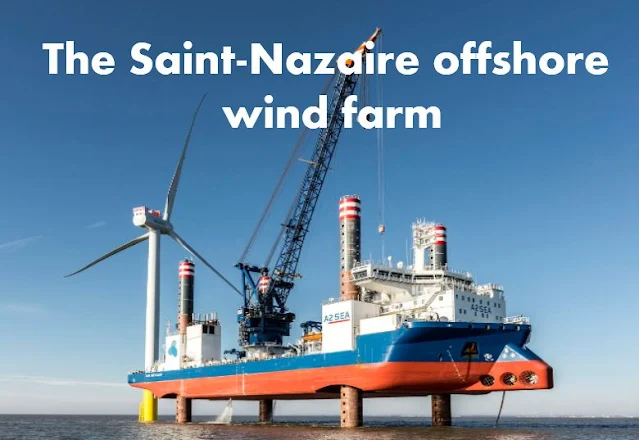
France's largest renewable energy project
The largest renewable energy project currently under development in France is the Saint-Nazaire offshore wind farm.
The project, located off the coast of the Loire-Atlantique region, is being developed by a consortium of French utility company EDF Renewables and Canadian energy infrastructure company Enbridge.
The Saint-Nazaire offshore wind farm is set to have a capacity of 480 megawatts (MW) and will consist of 80 wind turbines, each with a capacity of 6 MW. Once completed, it is expected to provide enough electricity to power around 430,000 households, or approximately 20% of the Loire-Atlantique region's electricity needs.
The project is also expected to create around 2,000 jobs during the construction phase, and will contribute to the development of the local economy in the Loire-Atlantique region.
The Saint-Nazaire offshore wind farm is part of France's ambitious target of reaching 40% renewable energy by 2030, and is one of several offshore wind energy projects currently under development in the country.
The Saint-Nazaire offshore wind farm in detail
The Saint-Nazaire offshore wind farm is a major renewable energy project being developed off the coast of the Loire-Atlantique region in western France.
Here are some details about The Saint-Nazaire offshore
Developer: The Saint-Nazaire offshore wind farm is being developed by a consortium consisting of French utility company EDF Renewables and Canadian energy infrastructure company Enbridge.
Capacity: The wind farm will have a total capacity of 480 megawatts (MW), which will be generated by 80 wind turbines. Each turbine will have a capacity of 6 MW.
Location: The wind farm is located approximately 12 to 20 kilometers off the coast of Saint-Nazaire in western France. The turbines will be installed in water depths ranging from 12 to 25 meters.
Output: The wind farm is expected to generate around 1.9 terawatt-hours (TWh) of electricity per year, which is equivalent to the annual electricity consumption of around 430,000 households.
Construction: The construction of the wind farm began in 2019 and is expected to be completed in 2022. The project is being carried out by a consortium of companies, including GE Renewable Energy, which is providing the wind turbines, and Bourbon, which is providing the installation vessels.
Job Creation: The development and construction of the wind farm is expected to create around 2,000 jobs, including 1,000 jobs during the construction phase and 100 jobs during the operational phase.
Economic Impact: The project is expected to have a significant economic impact on the Loire-Atlantique region, including the creation of jobs and the development of local supply chains.
Environmental Impact: The wind farm is expected to help reduce greenhouse gas emissions and contribute to France's target of reaching 40% renewable energy by 2030. However, the project has also faced criticism from some environmental groups, who are concerned about the impact of the turbines on local marine life.
The Saint-Nazaire offshore wind farm is a significant renewable energy project that is expected to help France transition to a low-carbon economy and reduce its greenhouse gas emissions.
France, Energy Sustainability
France has been making efforts to transition to a more sustainable and low-carbon energy system. In addition to investing in renewable energy sources such as wind, solar, and hydro power, France has also implemented policies aimed at improving energy efficiency and reducing greenhouse gas emissions.
One major policy initiative is the French Energy Transition for Green Growth Law, which was enacted in 2015. This law sets targets for reducing greenhouse gas emissions, increasing the share of renewable energy in the country's energy mix, and improving energy efficiency. For example, the law calls for reducing greenhouse gas emissions by 40% by 2030 compared to 1990 levels, and for increasing the share of renewable energy in France's energy mix to 32% by 2030.
France has also taken steps to phase out nuclear power, which currently provides about 70% of the country's electricity. In 2015, France announced plans to reduce its reliance on nuclear power to 50% by 2025 and to increase the share of renewable energy sources in the energy mix. While this target has been pushed back to 2035, France remains committed to reducing its reliance on nuclear power and increasing the share of renewable energy.
In addition to these policy initiatives, France is also investing in research and development of new energy technologies, such as battery storage and hydrogen fuel cells. France has also implemented building codes and energy efficiency standards aimed at reducing energy consumption in buildings.
France is making efforts to transition to a more sustainable and low-carbon energy system. While there is still progress to be made, France's policies and investments in renewable energy and energy efficiency are a step towards a more sustainable future.
France, Energy Transition
France is committed to transitioning to a more sustainable and low-carbon energy system. This transition involves reducing the country's reliance on fossil fuels, increasing the share of renewable energy sources in the energy mix, and improving energy efficiency. France has set ambitious targets for achieving these goals and has implemented a range of policy measures to support the transition.
One major policy initiative is the French Energy Transition for Green Growth Law, which was enacted in 2015. This law sets targets for reducing greenhouse gas emissions, increasing the share of renewable energy in the country's energy mix, and improving energy efficiency. For example, the law calls for reducing greenhouse gas emissions by 40% by 2030 compared to 1990 levels, and for increasing the share of renewable energy in France's energy mix to 32% by 2030.
France has also taken steps to phase out nuclear power, which currently provides about 70% of the country's electricity. In 2015, France announced plans to reduce its reliance on nuclear power to 50% by 2025 and to increase the share of renewable energy sources in the energy mix. While this target has been pushed back to 2035, France remains committed to reducing its reliance on nuclear power and increasing the share of renewable energy.
In addition to these policy initiatives, France is also investing in research and development of new energy technologies, such as battery storage and hydrogen fuel cells. France has also implemented building codes and energy efficiency standards aimed at reducing energy consumption in buildings.
France's energy transition is a complex process that involves a range of policy measures, investments, and technological innovations. While there is still progress to be made, France's commitment to a more sustainable and low-carbon energy system is a step towards a more environmentally friendly and economically sustainable future.
Franch Goverment Action to reduce fossil energy
The French government has taken a number of actions to reduce the country's reliance on fossil fuels and transition to a more sustainable energy system.
Here are some examples Franch Goverment Action to reduce fossil energy
Phasing out of coal: In 2019, the French government announced that it would close its remaining four coal-fired power plants by 2022. This move is part of France's efforts to reduce greenhouse gas emissions and transition to a low-carbon energy system.
Promotion of renewable energy: France has set a target of generating 32% of its energy from renewable sources by 2030. To achieve this goal, the French government has implemented a number of policies to support the development of renewable energy sources such as wind, solar, and hydro power. For example, France has implemented feed-in tariffs to incentivize the development of renewable energy projects.
Carbon pricing: France has implemented a carbon tax, which places a price on carbon emissions and incentivizes businesses and individuals to reduce their carbon footprint. The carbon tax has been controversial, however, and has faced protests from some groups.
Energy efficiency standards: The French government has implemented building codes and energy efficiency standards to reduce energy consumption in buildings. This includes measures such as insulation requirements, energy-efficient lighting, and the use of renewable energy sources for heating and cooling.
Phasing out of nuclear power: France has announced plans to reduce its reliance on nuclear power and increase the share of renewable energy in the energy mix. While this transition has been delayed, France remains committed to reducing its reliance on nuclear power.
The French government's actions to reduce fossil energy use are part of a broader effort to transition to a more sustainable and low-carbon energy system. While there is still progress to be made, France's policies and investments in renewable energy and energy efficiency are a step towards a more environmentally friendly and economically sustainable future.

Diversity and Inclusion in France
France is a diverse country, with a multicultural population that includes immigrants and their descendants from former French colonies in Africa, Asia, and the Caribbean. Despite this diversity, France has struggled with issues related to inclusion and discrimination, particularly against minority groups.
One of the major challenges facing France in terms of diversity and inclusion is racism and discrimination. Studies have shown that people from minority backgrounds in France are more likely to experience discrimination in areas such as education, employment, and housing. Discrimination is also an issue in the criminal justice system, where people from minority backgrounds are overrepresented in the prison population.
The French government has taken steps to address these issues, including the introduction of anti-discrimination laws and the establishment of bodies such as the Defender of Rights, which aims to protect citizens against discrimination. However, there is still work to be done to ensure that these laws and policies are effectively enforced and that minority communities are truly included in French society.
Another area where France faces challenges related to diversity and inclusion is with respect to religion. France has a strict secularism policy, known as laïcité, which is intended to ensure the separation of church and state. However, this policy has been criticized for being used to marginalize religious minorities, particularly Muslims. For example, there have been controversies over the wearing of the Islamic veil in public spaces, and some politicians have called for the banning of the hijab in public.
Diversity and inclusion are complex issues in France, and there is still much work to be done to ensure that minority communities are truly included and valued in French society.
While the government has taken steps to address discrimination and promote inclusion, there is a need for continued dialogue and action to ensure that France truly becomes a welcoming and inclusive society for all its citizens

Community empowerment programs in France
Community empowerment programs in France aim to empower local communities to actively participate in decision-making processes and take ownership of local development projects.
Here are some examples of community empowerment programs in France:
Participatory budgeting: Participatory budgeting is a process that allows citizens to decide how to allocate public funds in their communities. This process gives citizens a voice in local decision-making, enabling them to prioritize and allocate resources based on their needs and preferences. Many cities in France have implemented participatory budgeting programs, allowing citizens to propose and vote on local projects.
Local development partnerships: Local development partnerships bring together local stakeholders, including residents, businesses, and local authorities, to develop and implement local development strategies. These partnerships encourage collaboration and cooperation between different stakeholders, enabling them to work together towards common goals.
Community-led projects: Community-led projects empower local communities to take ownership of local development initiatives, enabling them to identify and address local issues. These projects can be related to a range of areas, such as sustainable development, social inclusion, and cultural activities.
Social innovation: Social innovation involves the development of new solutions to social challenges, with a focus on addressing the needs and aspirations of local communities. Social innovation initiatives often involve collaboration between different stakeholders, including citizens, social entrepreneurs, and public authorities.
Citizen assemblies: Citizen assemblies bring together randomly selected citizens to deliberate on specific issues and make recommendations to public authorities. These assemblies provide an opportunity for citizens to engage in decision-making processes, enabling them to contribute to local policy development.
Community empowerment programs in France aim to promote citizen participation in decision-making processes, enabling them to take ownership of local development initiatives and work together towards common goals. These programs have the potential to promote more inclusive, participatory, and sustainable forms of local development, while also strengthening democratic governance and social cohesion.
Conclusion on the Implementation of Renewable Energy in France
France has made significant progress in implementing renewable energy sources to reduce its greenhouse gas emissions and transition towards a low-carbon economy.
The country has set ambitious targets for renewable energy development and has implemented various policies and initiatives to achieve these goals.
France has made significant investments in renewable energy sources such as wind, solar, hydro, and biomass, and has encouraged the development of large-scale projects in these areas. The government has also provided financial incentives and technical support to encourage businesses and individuals to invest in renewable energy, as well as implementing energy efficiency measures to reduce energy consumption.
The country's energy mix is gradually shifting towards renewable energy sources, with renewables accounting for over 23% of electricity production in 2020. However, there are still challenges to overcome, such as the intermittency of renewable energy sources, the need for energy storage systems, and the need to ensure a fair and equitable distribution of costs and benefits.
France's renewable energy implementation efforts have made significant progress, and the country is well-positioned to continue its transition towards a low-carbon economy, while also creating new jobs and economic opportunities in the renewable energy sector.


